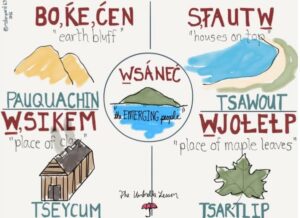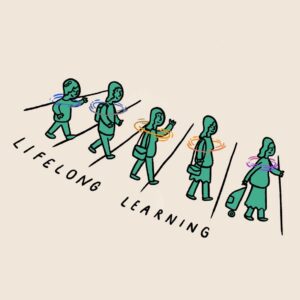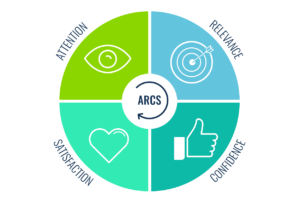Hello everyone! My name is Anna McClintock, and I recently graduated from the University of Victoria with my Bachelor of Education in Elementary Curriculum this past June. Since then, I have been working as a Teaching Teacher on Call (TTOC) in School District 63 on WSANEC territory. I feel so grateful to be able to live, learn and teach on these lands, it’s a place I truly love and consider my home.

WSANEC territory made up of TSEYCUM, TSARTLIP, TSAWOUT AND PAUQUACHIN first nations.
Alongside teaching, I have returned to UVic to upgrade from a category 4 to a category 5. Balancing these two roles has been both challenging and rewarding, as it allows me to deepen my professional experience in the classroom while simultaneously engaging with new learning opportunities at the university. This is just the beginning of my journey as a lifelong learner. This course feels like a natural fit because of my strong interest in how social media and technology intersect with education. I see these tools playing a significant role not only in my personal life but also in the lives of my students, shaping the ways they communicate, collaborate, and engage with learning.

For me, learning is most effective when it builds understanding through meaningful connections and hands-on experiences. One of the most memorable and impactful learning experiences I’ve had took place during my practicum. I designed a lesson that linked art and science, where students created dioramas of their personal “happy places” in nature. Seeing students engage with the lesson and reflect on their own experiences while learning scientific concepts made me realize how deeply learning can resonate when it connects to something meaningful. I learned alongside them, discovering that teaching is not just about delivering content, it’s about fostering curiosity, supporting creativity and helping students see themselves reflected in their learning.
In terms of my learning philosophy, I find myself most aligned with constructivist approaches. I learn best when I can actively engage with new ideas, connect them to prior knowledge and apply them in practical, hands-on ways. I’ve noticed that motivation plays a critical role in this process for me and one concept from the ARCS model that resonates deeply is relevance. When I can clearly see why a concept or skill matters, whether for my growth as a teacher, for my students’ learning or for my own personal development, I feel far more engaged and inspired to invest effort into understanding it. This focus on relevance mirrors a TED Talk I recently watched by Priyam Baruah, which emphasized personalized learning and creating supportive educational environments. Baruah discusses the importance of motivation and excitement in learning and how teachers can implement strategies that allow every student to feel seen, valued, and capable.
I also view my prior knowledge as a key tool in approaching new learning. Experiences in classrooms with Universal Design for Learning (UDL) have provided me with a strong foundation that allows me to connect new course content to strategies I have already implemented. This grounding makes learning feel concrete, practical and exciting rather than abstract. It gives me confidence to experiment with new ideas while remaining anchored in tried-and-true teaching practices.
Overall, I’m eager to explore these themes further this term, examining how technology, motivation and meaningful connections can intersect to create more engaging learning experiences.

ARCS Model: Attention, Relevance, Satisfaction and Confidence

